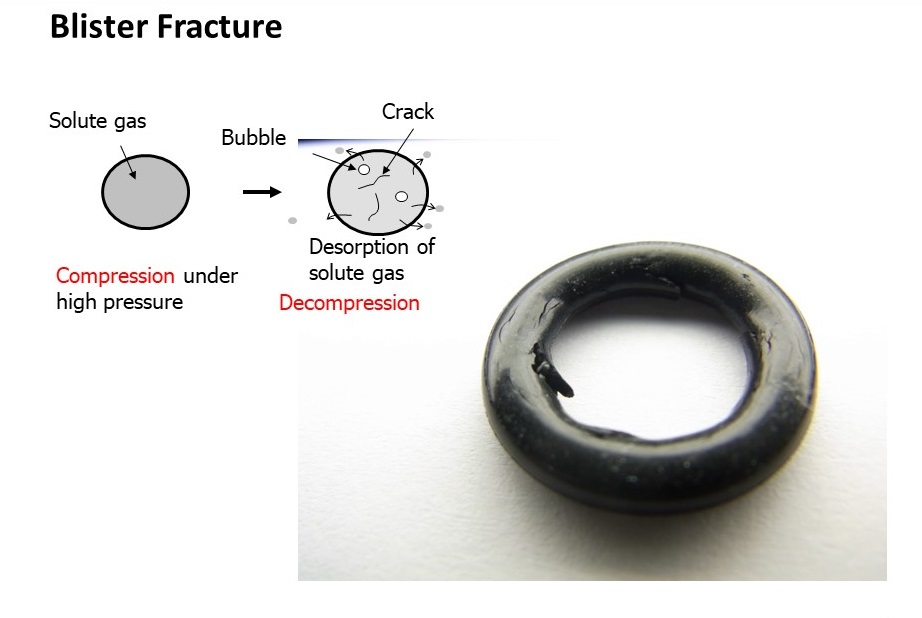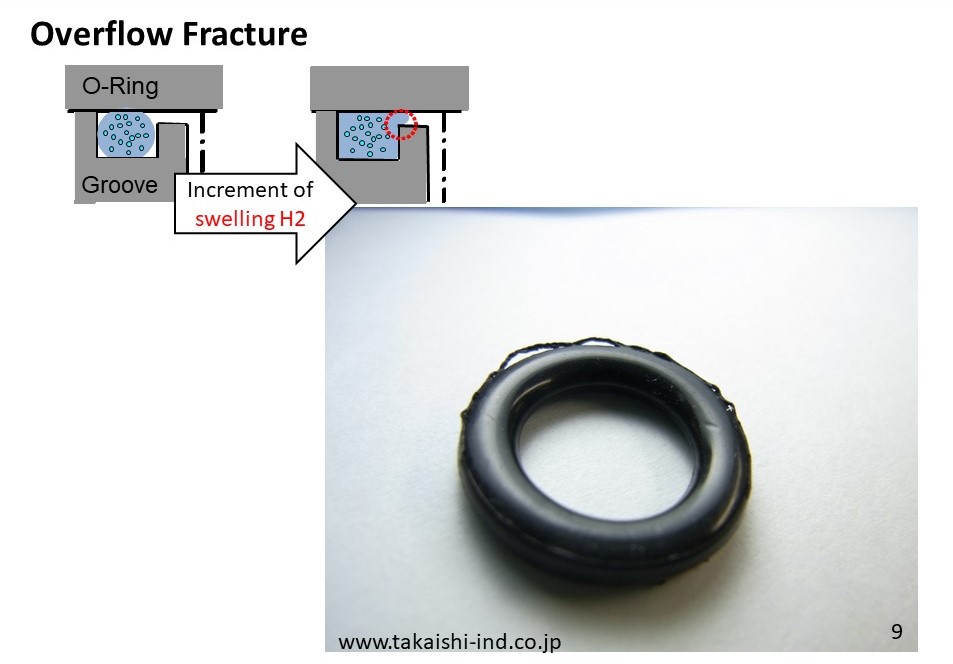What are the major sealing problems for high pressure hydrogen?
Our company have developed O-rings for high pressure hydrogen. Nowadays, They are used in many hydrogen refueling stations and its usage is spreading.
When rubber O-rings are used under high pressure hydrogen environment, it is often said that "Blister destruction" and "Overflow destruction" are major problems.
○ Blister destruction

When rubber O-rings are exposed to high pressure hydrogen gas, hydrogen will be penetrated and stored inside the rubber. After that, when depressurized, hydrogen tries to go out. At that time, bubbles can be generated inside and cracks may occur.
If the crack grows, the rubber packing will be destroyed from inside to the surface. This is the blister destruction phenomenon, one of the main cause of leaking.
The photo above is an EPDM O-ring, with a test formulation, exposed to 90Mpa hydrogen.
You can see how the surface is split from the inside.
○ Overflow destruction

The diagram above is a cross-sectional view of the O-ring seal structure.
Hydrogen is stored inside O-ring more and more when the O-rings are exposed to high-pressure hydrogen gas. After that, the O-ring swells with hydrogen.
The volume increases due to the penetration of hydrogen, and it protrudes from the groove. The protruding O-ring will eventually be destroyed. This is the "Overflow destruction phenomenon."
The photo shows an EPDM(test formulation) O-ring exposed to 90Mpa hydrogen.
The upper part of the O-ring looks like a beard. It's not because of the burr, but the fracture by high pressure hydrogen.
These pictures are tested at 90MPa. These destruction are supposed to be made by combination of the penetration of hydrogen and the load due to pressure increase/decrease cycle.
When using rubber packing with high pressure hydrogen, the challenge is to minimize these destruction.
Takaishi's sealing technology develpoed the best solution for these problems.

